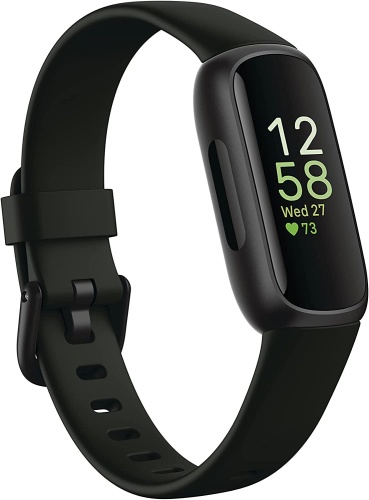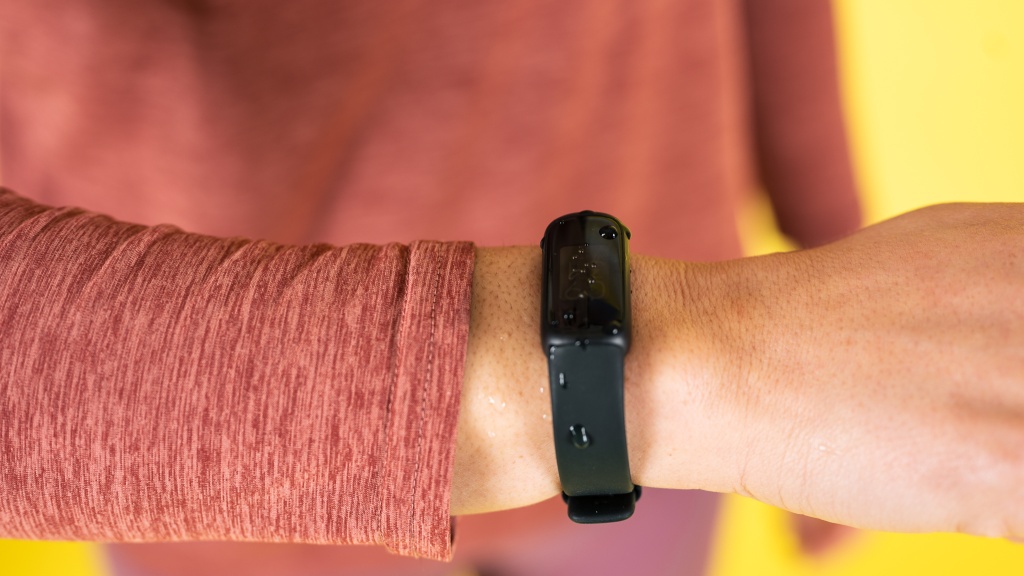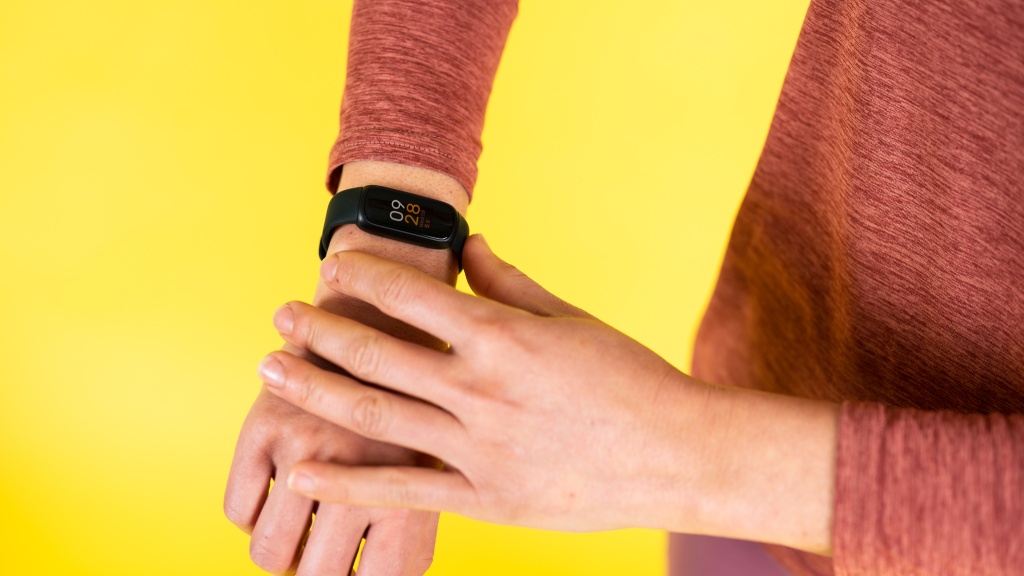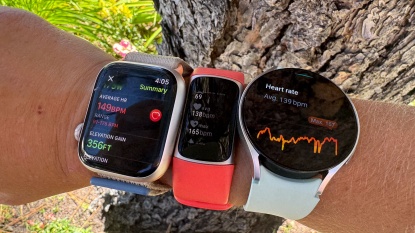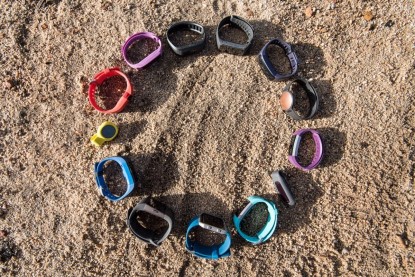Fitbit Inspire 3 Review
Our Verdict
Compare to Similar Products
 This Product Fitbit Inspire 3 | |||||
|---|---|---|---|---|---|
| Awards | Best Value for Athletes | Top Pick for Light and Simple | Best on a Tight Budget | ||
| Price | $100 List $99.13 at Amazon | $300 List $219.99 at Amazon | $160 List $119.95 at Amazon | $50 List $39.99 at Amazon | $50 List $45.45 at Amazon |
Overall Score  |
|||||
| Star Rating | |||||
| Bottom Line | We recommend this product if you're looking for an affordable and lightweight fitness tracker that offers excellent fitness features | An excellent fitness tracker for athletes at an affordable price | A great fitness tracker from a brand that is synonomous with fitness tracking, this device offers function at a good price | The device offers a lot of function and value, although it has some limitations related to heart rate monitoring and health tracking | This device has an intuitive interface, great step counting, and good battery performance, but it is limited as a fitness tracker, and we found the standard band annoying |
| Rating Categories | Fitbit Inspire 3 | Garmin Vivoactive 5 | Fitbit Charge 6 | Amazfit Band 7 | Xiaomi Band 8 |
| Fitness Impact (30%) | |||||
| Health Impact (30%) | |||||
| Ease of Use (20%) | |||||
| Battery (10%) | |||||
| Fit (10%) | |||||
| Specifications | Fitbit Inspire 3 | Garmin Vivoactive 5 | Fitbit Charge 6 | Amazfit Band 7 | Xiaomi Band 8 |
| Measured Weight | .68 oz | 1.26 oz | 1 oz | 1 oz | .90 oz |
| Measured Display Diameter | 14.6 mm | 38.0 mm | 19.4 mm | 21.9 mm | 20.4 mm |
| Heart Rate Average Beats Per Second Off | 6.4 | 4.4 | 15.4 | 15.9 | 4.5 |
| Manufacturer Stated Battery Life | Up to 10 days | Up to 11 days 5 days display always-on |
7 days | Heavy Usage: 12 Days Typical Usage: 18 Days Battery Saver Mode: 28 Days |
16 days with typical usage 6 days in AOD mode |
| Built-In GPS Tracking | No | Yes | Yes | No | No |
| Screen Type | AMOLED | AMOLED | AMOLED | AMOLED | AMOLED |
| Measured Charge Time | 1.25 Hours | 1.70 Hours | 1.60 Hours | 1.75 Hours | 0.90 Hours |
| Heart Rate Monitor | Yes | Yes | Yes | Yes | Yes |
| Sleep Tracking | Yes | Yes | Yes | Yes | Yes |
| Altimeter (Elevation Tracking) | No | No | No | No | No |
| Did a single charge survive a 3 day weekend? | Yes | Yes | Yes - highly depends on usage | Yes | Yes |
| Sensors | 3-Axis accelerometer, optical heart rate monitor, red and infrared sensors for blood oxygen (SpO2) monitoring, ambient light sensor | GPS, Glonass, Garmin Elevate Wrist Heart Rate Monitor, Pulse Ox Blood Oxygen Saturation Monitor, Compass, Accelerometer, Thermometer, Ambient Light Sensor | Heart rate monitor and tracking, built-in GPS, SPO2 monitoring, 3-axis accelerometer, temperature skin, blood glucose tracking and NFC | BioTracker™ 3.0 PPG biometric sensor (supports blood-oxygen, 1PD + 2LED), 3-Axis acceleration sensor, geomagnetic sensor |
High precision 6-axis senser PPG heart rate sensor Ambient light sensor |
| Memory | Saves 7 days of detailed motion data, minute by minute, Saves daily totals for the last 30 days, Stores heart rate data at one-second intervals during exercise tracking and at five-second intervals all other times | 4 GB | 4 GB | Not mentioned | 100 GB |
| Connectivity | Apple iOS 15 or higher. Android OS 10 or higher |
Bluetooth®, ANT+®, Wi-Fi® | Apple iOS 15 and higher Android 10 or higher |
Android 7.0 and above, iOS 12.0 and above | Bluetooth 5.1 LE, Compatible with Android 6+ and iOS 12+ |
| Water Resistance | 5 ATM (50m) | 5 ATM (50m) | 5 ATM (50m) | 5 ATM (50m) | 5 ATM (50m) |
| Notifications | Text, call, push notifications | Text, call, push notifications | Text, call, push notifications | Text, call, push notifications | Text, call, push notifications |
| Alarm Clock Function | Yes | Yes | Yes | Yes | Yes |
| Music Control | Yes | Yes | Yes | Yes | Yes |
| Color Options? | -3 colors | -4 colors | -3 colors | -5 colors | -1 color -3 band styles available in multiple colors for additional cost |
Our Analysis and Test Results
The Inspire 3 is a fantastic budget fitness tracker that logs workouts and other health metrics well. We found this model to be the top among other budget fitness trackers.
Fitness Impact
The Fitbit Inspire 3 leaves a lasting impact on fitness enthusiasts, demonstrating exceptional performance across a range of metrics. One of its standout features is the vibrant and engaging community compare function, which allows users to connect with extensive fitness and health groups. These groups provide valuable support, engaging challenges, and a platform to share achievements and goals, creating a strong sense of community among users. With everything from fitness to health-focused groups, users can find like-minded individuals and stay motivated on their fitness journey.
Walking accuracy is a strong suit of the Inspire 3, as it showcases remarkable precision with an average step differential of only 6.3. This level of accuracy instills confidence in users, ensuring that their steps are accurately tracked, and distance is reliably measured. The step score and distance precision further solidify the device's performance in accurately monitoring daily activities and providing users with valuable insights into their fitness progress.
This tracker's cycling tracking capability falls slightly short as it does not log elevation. However, it compensates for this limitation by offering other important metrics, such as distance, speed, and time. These metrics allow cyclists to track their rides, monitor their progress, and make informed decisions to improve performance.
When it comes to workout tracking, the Inspire 3 delivers adequate performance through its app. However, the tracker provides limited information and cannot create intervals—a feature that many fitness enthusiasts find valuable for structured training. Users seeking more advanced workout options may find themselves somewhat limited by the tracker's capabilities.
On a positive note, the Inspire 3 offers a modest range of trackable activities, boasting a total of 21 options to choose from. While the tracker allows customization of six pre-sets, including weights, yoga, outdoor workouts, and more, our testers expressed a desire for even greater variety. They envisioned additional tracking options to cater to their diverse interests in various sports and activities.
Health Impact
In terms of health features, the Fitbit Inspire 3 undergoes rigorous testing across multiple submetrics to assess its impact on users' well-being. These tests focus on the quality of the nutritional features, heart rate monitor, variety of health indicators, and sleep tracking. Each sub-metric carries a specific weighting and is scored out of 10, contributing to the overall evaluation of the device's health impact.
The heart rate monitor of the Inspire 3 receives considerable attention, accounting for 30% of the overall health impact score. With an average accuracy rating, the heart rate monitor demonstrates acceptable performance. The largest difference in heart rate recorded was 27 beats, indicating a relatively reliable tracking capability for users to monitor their heart rate compared to other trackers in our testing.
Dieting features play a significant role in promoting healthy eating habits, and the Fitbit Inspire 3 excels in this regard. Testers praise the device for its intuitive and easy-to-use nutrition interface. Users have the ability to input specific food items and adjust serving sizes, making it convenient to log meals accurately. The inclusion of adjustable calorie counts for various recipes allows for greater customization and control over dietary choices. The comprehensive food diary, bar code reader, and nutrient breakdown enhance the overall dieting experience, making it a standout feature for individuals seeking to track their nutrition effectively.
Additional health indicators on the Fitbit Inspire 3 encompass a range of valuable functionalities, including standing and inactivity reminders, mental and stress detection, progress tracking, and blood oxygen monitoring. While the device lacks ECG and skin temperature features, it encompasses the essential health indicators found in most Fitbit devices. Additionally, the Fitbit app offers menstrual cycle tracking, providing a comprehensive health monitoring experience for female users.
Sleep tracking is another key aspect evaluated in the health impact metric. The Inspire 3 exhibits commendable accuracy in recognizing wake-up times, although there were occasional discrepancies when attempting to differentiate between being awake and falling back asleep. The device provides a detailed sleep analysis, including a visual graph, sleep score, total sleep time, and benchmark comparisons. Notably, the ability to monitor noise levels and snoring during sleep enhances the overall sleep tracking experience. Additionally, the device logs blood oxygen saturation levels, offering reassurance and insights into potential breathing issues.
Ease of Use
The Fitbit Inspire 3 excels in terms of user-friendliness and ease of use, undergoing comprehensive testing across various sub-metrics. These tests evaluate battery life, the companion app, navigating menus on the device, and ease of putting on the tracker.
The battery life of the Inspire 3 garners significant praise, accounting for 45% of the overall ease of use score. With an impressive battery life of up to 10 days, the tracker outperforms many others in its category. Testers noted that even after a week of use, the device still had approximately 65% battery remaining, showcasing its exceptional power-saving capabilities.
The companion app, used to interface with this tracker, provides users with a comprehensive and user-friendly experience. If you are familiar with other Fitbit devices, the Inspire 3 app interface will prove no problem for you.
Navigating menus on the device is a crucial aspect of user experience, and the Inspire 3 delivers a satisfactory performance. With a layout similar to the Charge series, the menus are organized and intuitive to navigate. Testers appreciated the functionality of the side sensors, which can be utilized as back buttons and provide easy access to the watch face. However, there were limitations in terms of going back within specific functions, as swiping left moves to the next function.
The Fitbit Inspire 3 adopts a classic watch-style design, making it effortless to put on and wear. Adjusting the clasp and excess tail proved to be quick and hassle-free, ensuring a comfortable fit.
Display
The Inspire 3 underwent thorough testing to assess the quality and functionality of its display. This aspect plays a significant role in the overall user experience. The display was evaluated based on three key factors: screen quality, responsiveness, and smart notifications.
When it comes to screen quality, the Fitbit Inspire 3 received moderate feedback. The relatively small screen size often resulted in truncated words, requiring users to wait for the text to scroll for complete visibility. Reading texts, especially in group conversations, proved challenging as only the first name of the sender was displayed, causing confusion.
In terms of responsiveness, the device exhibited occasional delays in registering finger touches, particularly when waking it up or quickly scrolling. However, it performed better with slower finger movements, ensuring accuracy in those instances.
Smart notifications, including text, call, and push notifications, were supported by the Fitbit Inspire 3, allowing users to stay informed and connected.
Ergonomics
In assessing the Fitbit Inspire 3's ergonomics, there were two primary factors that we considered: profile design and comfort.
Comfort played a significant role, with testers noting the lightweight nature of the device, making it easy to forget it was even on their wrist. Although there was a slight pressure felt on the underside, overall comfort was satisfactory, thanks to its diminutive size and weight.
Should you buy the Fitbit Inspire 3?
If you are in the market for a cheap and light fitness tracker with good tracking capabilities, then the Inspire 3 will not disappoint. Even though it has a limited display, it makes up for this weakness by performing well in other areas.
What Other Fitness Trackers Should You Consider?
Although the Inspire 3 provides a lot of firepower for the price, it may still be too much for some. If you're looking for a simple budget option, it would be worth checking out the Amazfit Band 7. However, if you are confident that a comprehensive fitness tracker will be valuable to you, it may be worth considering a more expensive option like the Apple Watch SE Gen 2.


